Business > Dissertation > One Belt One Road (OBOR): From the Eyes of the General Public of China. Graded A (All)
One Belt One Road (OBOR): From the Eyes of the General Public of China. Graded A
Document Content and Description Below
Abstract China is among one of the world fastest growing economy. Over the last few years China has made some great milestones towards expanding economically by shifting from a low-production economy ... to an innovative high-production economy. One of the most prominent features of the determination of China to expand economically and strategically position itself in the world economy is the One Belt One Road initiative (OBOR). The OBOR is a project that has two main parts, the Maritime Silk Network and the Silk Road economic Belt. It is one of the largest projects to be ever done by China connecting China to more than 60 countries. This research will focus on evaluating the OBOR initiative in the eyes of the general public of China. This includes what the Chinese general public view as the importance and also shortcomings of the OBOR project. More importantly our research will focus on the role that the Chinese media plays in shaping the opinion that the public has towards the OBOR initiative. The research also conducts literature review to examine the work of previous researchers in regards to the OBOR initiative. This research also adopted quantitative research methodology by using primary data. The primary data was collected through a survey method that involved the distribution of questionnaires to respondents. The questionnaires have relevant questions revolving around what are the respondent’s views towards the OBOR project. A sample of 100 respondents was surveyed by the use of convenience sampling. From the survey response the research proceeds to analyze data to get more understanding on the response of the respondents and also make recommendations in regards to the OBOR initiative. The results of this research shows that to most of the general public of China, however much most feels that there are positive impact of OBOR in to their life and to the country at large there are some serious reservations that most people have regarding the OBOR. The two three main concerns is on the approach that the Chinese government has taken towards the project, the insecurities and terror threat associated with the initiative and the fact that the government has shown little efforts in enlightening the public on the details of the OBOR initiative. The research also found that there the Chinese media have played a critical role in shaping the public view towards the OBOR. Specifically, the media has worked to promote the official government position of painting the OBOR only on the positive side with little regard to the negative side of the OBOR initiative. The research finally makes recommendation on the need for the Chinese government to shift their approach towards the OBOR by focusing more on investing to other countries through privates companies in collaboration with the government rather than using the SOEs. References Adisu, K., Sharkey, T. and Okoroafo, S.C., 2010. The impact of Chinese investment in Africa. International Journal of Business and Management, 5(9), p.3. Adisu, K., Sharkey, T. and Okoroafo, S.C., 2010. The impact of Chinese investment in Africa. International Journal of Business and Management, 5(9), p.3. Avim, 2017. One Belt One Road in the eyes of the Chinese Youths. China Youth Daily. Banerjee, D., 2016. China’s One Belt One Road Initiative–An Indian Perspective. Perspective, 14. Bellina, B., 2014. Maritime Silk Roads’ ornament industries: socio-political practices and cultural transfers in the South China Sea. Cambridge Archaeological Journal, 24(3), pp.345-377. Brautigam, D., 2014. Chinese investment in Africa. NYU Center on US-China Relations Disponível em:[http://uschinacenter. As. nyu. Edu/docs/IO/27891/Brautigam_NYU_Chinese. pdf]. Acesso em, 17. Callahan, WA, 2016. China’s “Asia Dream” The Belt Road Initiative and the new regional order. Asian Journal of Comparative Politics, 1(3), pp.226-243. Chung, J.H., 2015. Views from Northeast Asia. Global Asia, 10(3), pp.22-26. Creswell, JW and Creswell, JD, 2017. Research design: Qualitative, quantitative, and mixed methods approaches. Sage publications. Deng, P., 2004. Outward investment by Chinese MNCs: Motivations and implications. Business horizons, 47(3), pp.8-16. Fallon, T, 2015. The new silk road: Xi Jinping's grand strategy for Eurasia. American Foreign Policy Interests, 37(3), pp.140-147. Ferdinand, P, 2016. Westward ho—the China dream and ‘one belt, one road’: Chinese foreign policy under Xi Jinping. International Affairs, 92(4), pp.941-957. Grieger, G., 2016. One Belt, One Road (OBOR): China's regional integration initiative. European Parliament. Haiquan, L, 2017. The Security Challenges of the “One Belt, One Road” Initiative and China’s Choices. Croatian International Relations Review, 23(78), pp.129–147. Heggelund, G., 2017. Environment and resettlement politics in China: the Three Gorges Project. Routledge. Irshad, MS, 2015. One Belt and One Road: Dose China-Pakistan Economic Corridor Benefit for Pakistan's Economy? Jacq-Hergoualc'h, M., 2002. The Malay Peninsula: Crossroads of the Maritime Silk-Road (100 BC-1300 AD) (Vol. 13). Brill. Jiao, W. and Yunbi, Z., 2013. Xi in call for building of new'maritime silk road.'. China Daily, 4, pp.2013-10. Kaczmarski, M, 2015. The New Silk Road: a versatile instrument in China’s policy. Kaplinsky, R. and Morris, M., 2009. Chinese FDI in Sub-Saharan Africa: engaging with large dragons. The European Journal of Development Research, 21(4), pp.551-569. Kolstad, I. and Wiig, A., 2011. Better the devil you know? Chinese foreign direct investment in Africa. Journal of African Business, 12(1), pp.31-50. Kothari, CR, 2004. Research methodology: Methods and techniques. New Age International. Lam, W.L.L., 2006. Chinese politics in the Hu Jintao era: New leaders, new challenges. ME Sharpe. Len, C., 2015. China's 21st Century Maritime Silk Road initiative, energy security and SLOC access. Maritime Affairs: Journal of the National Maritime Foundation of India, 11(1), pp.1-18. Li, F, Wang, R, Paulussen, J and Liu, X, 2005. Comprehensive concept planning of urban greening based on ecological principles: a case study in Beijing, China. Landscape and urban planning, 72(4), pp.325-336. Li, P, Qian, H, Howard, KW and Wu, J, 2015. Building a new and sustainable “Silk Road economic belt”. Environmental Earth Sciences, 74(10), pp.7267-7270. Lim, A.C.H., 2015. Africa and China's 21st Century Maritime Silk Road. East Asian Institute, National University of Singapore. Lim, T.W., Chan, H.H.L., Tseng, K.H.Y. and Lim, W.X., 2016. China's one belt one road initiative. London: Imperial College Press. Lin, J.Y., 2015. “One Belt and One Road" and Free Trade Zones-China's New Opening-up Initiatives 1. Frontiers of Economics in China, 10(4), p.585. Lloyd, J and Hopkins, P, 2015. Using interviews to research body size: methodological and ethical considerations. Area, 47(3), pp.305-310. Markey, D.S. and West, J., 2016. Behind China’s gambit in Pakistan. Council on Foreign Relations, 5(1). Martinot, E., 2001. World bank energy projects in China: influences on environmental protection. Energy Policy, 29(8), pp.581-594. Mustafic, A, 2017. China’s One Belt, One Road and Energy Security Initiatives: A Plan to Conquer the World?. Inquiry, 2(2). Nair, V, 2018. One Belt, One Road, Many Problems. Cambridge Globalist. Nie, W., 2016. Xi Jinping's foreign policy dilemma: one belt, one road or the South China Sea?. Contemporary Southeast Asia: A Journal of International and Strategic Affairs, 38(3), pp.422-444. Onjala, J., 2008. A scoping study on China-Africa economic relations: The case of Kenya. Saran S, Ritika P. Seizing the ‘One Belt, One Road’opportunity. The Hindu. 2016 Feb 2. Seesaghur, H, 2018. Corridors of Opportunities and Tensions : One Belt, One Road. Mauritius forward. Shen S, Chan W 2018. A comparative study of the “Belt and Road Initiative” and the Marshall Plan. Palgrave Commun 4 https://doi.org/10.1057/s41599-018-0077-9 Shen, X., 2013. Private Chinese investment in Africa: Myths and realities. The World Bank. Singh, Z.D., 2014. Indian perceptions of China’s maritime silk road idea. Journal of Defence Studies, 8(4), p.136. Summers, T, 2016. China’s ‘New Silk Roads’: sub-national regions and networks of global political economy. Third World Quarterly, 37(9), pp.1628-1643. Swaine, MD, 2015. Chinese views and commentary on the ‘One Belt, One Road’initiative. China Leadership Monitor, 47(2), p.3. Tiezzi, S., 2014. China's' New Silk Road'Vision Revealed. The Diplomat, 9. Van der Putten, F.P. and Meijnders, M., 2015. China, Europe and the Maritime Silk Road. Clingendael, Netherlands Institute of International Relations. Wang, Y, 2016. Offensive for defensive: the belt and road initiative and China's new grand strategy. The Pacific Review, 29(3), pp.455-463. Yardley, J., 2007. Chinese dam projects criticized for their human costs. The New York Times, 19(11). Yip, P & Ren, Y, 2017. Hong Kong needs Youth power in its role as a belt and road super connector. South China Morning Post. Yu, H, 2017. Motivation behind China’s ‘One Belt, One Road’initiatives and establishment of the Asian infrastructure investment bank. Journal of Contemporary China, 26(105), pp.353-368. Zhu, Z, 2015. China’s AIIB and OBOR: Ambitions and Challenges. The Diplomat, 9(10), p.2015. [Show More]
Last updated: 2 years ago
Preview 1 out of 58 pages
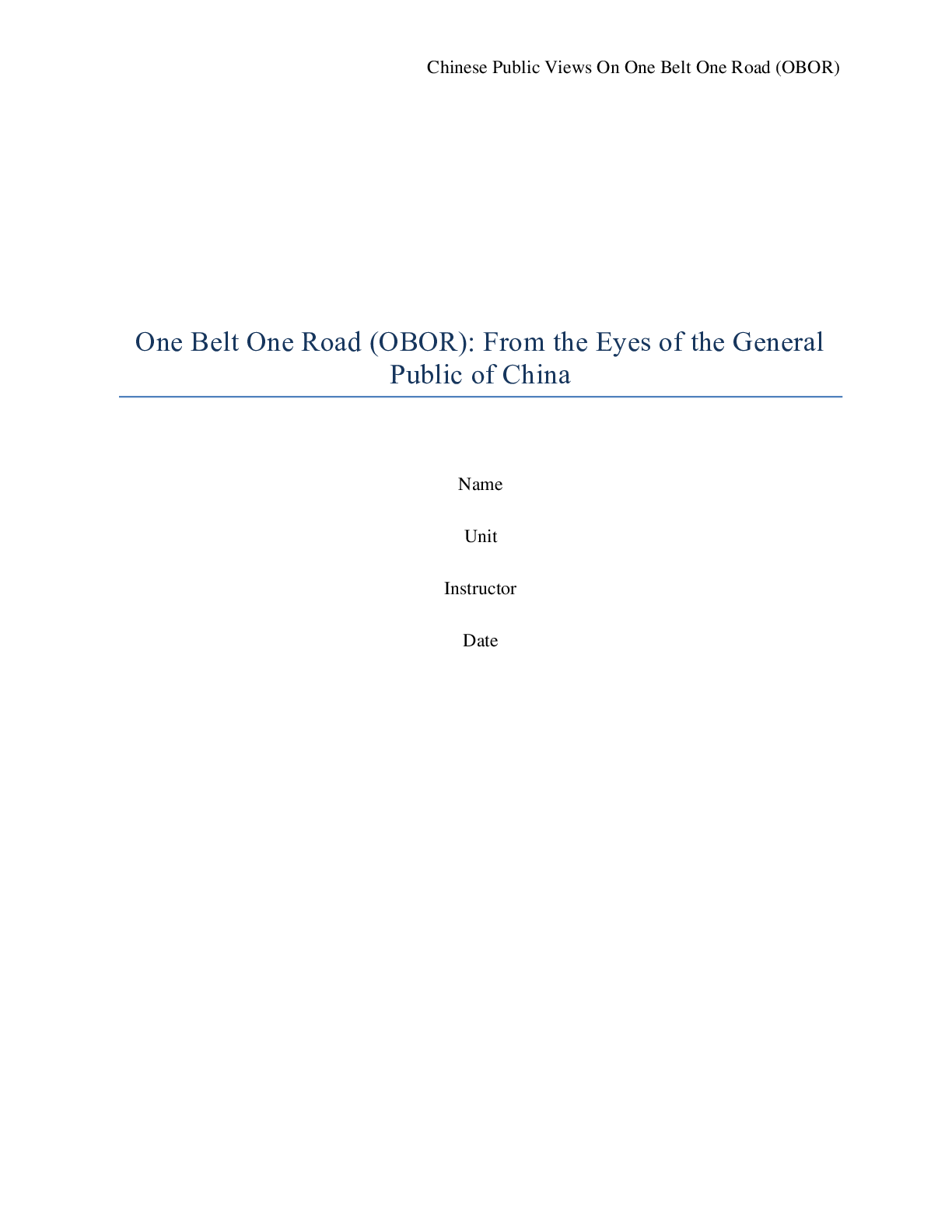
Buy this document to get the full access instantly
Instant Download Access after purchase
Buy NowInstant download
We Accept:

Reviews( 0 )
$21.00
Can't find what you want? Try our AI powered Search
Document information
Connected school, study & course
About the document
Uploaded On
Jul 09, 2020
Number of pages
58
Written in
All
Additional information
This document has been written for:
Uploaded
Jul 09, 2020
Downloads
0
Views
263

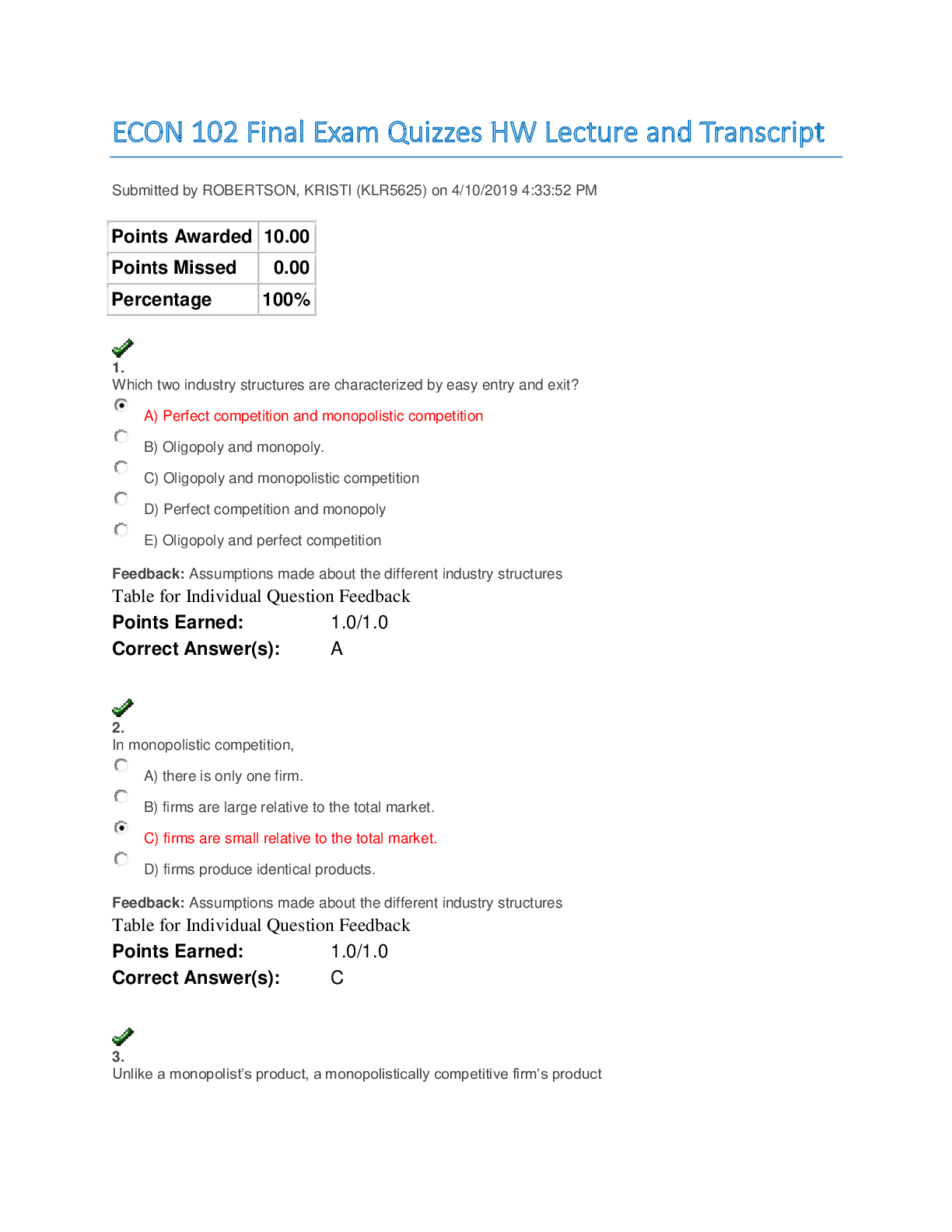
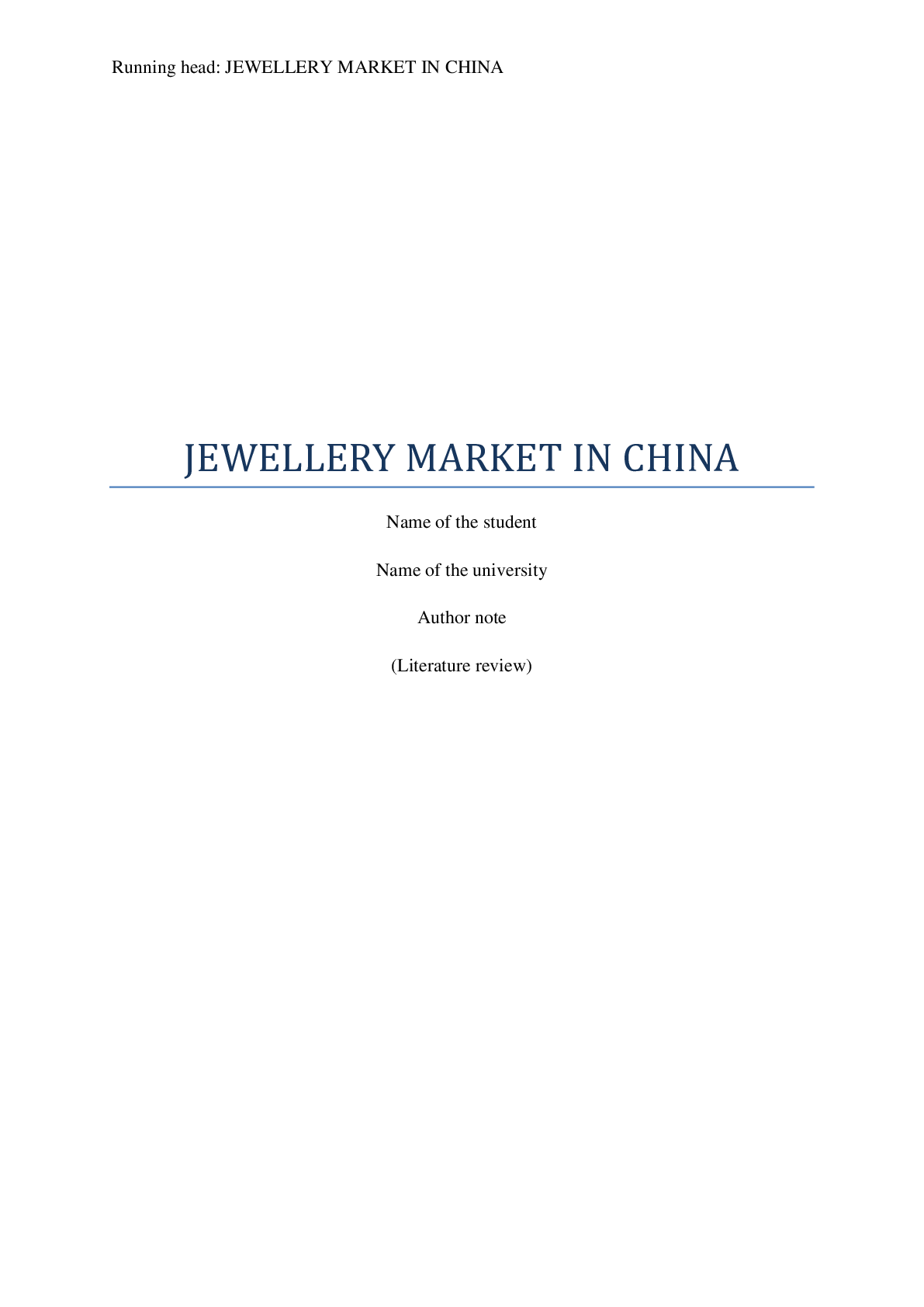



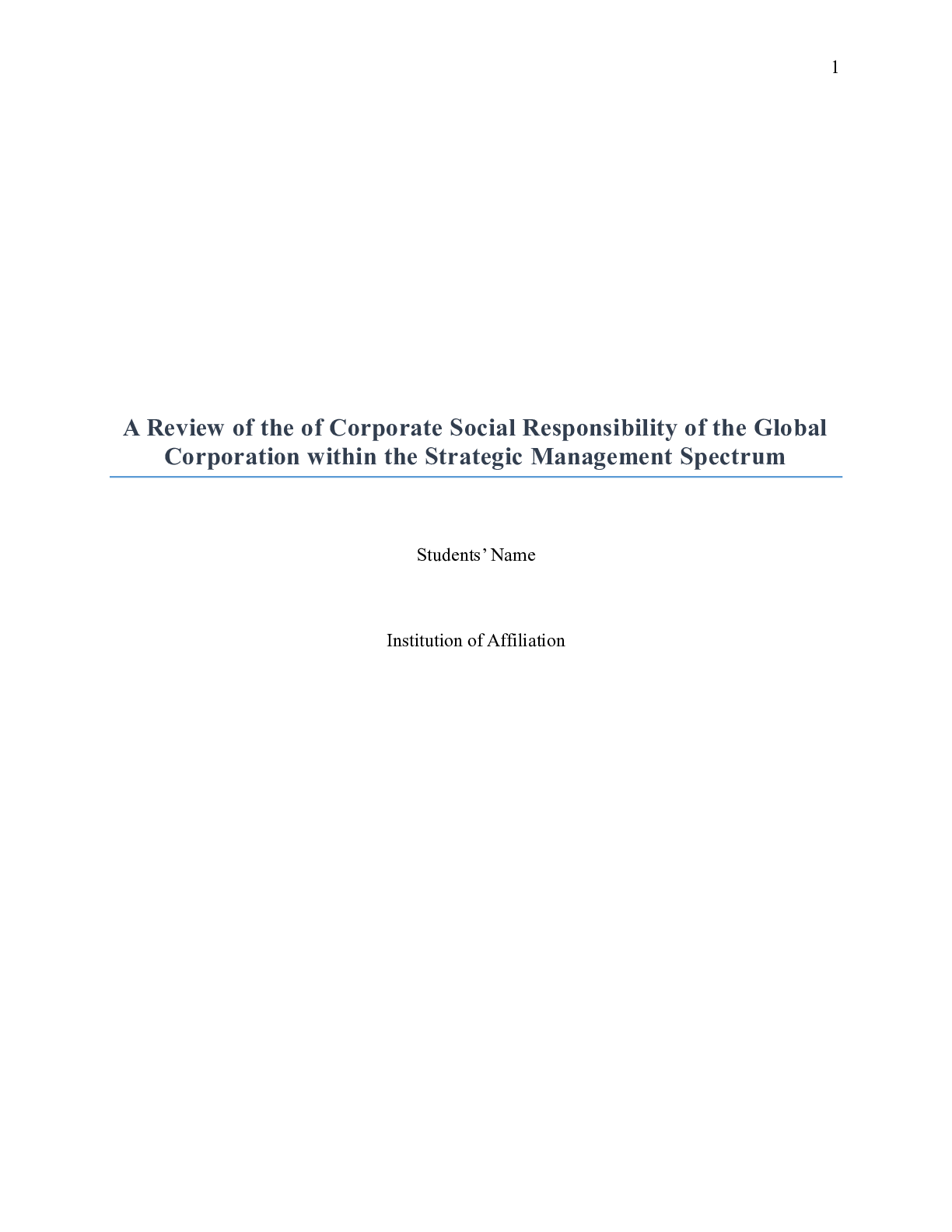
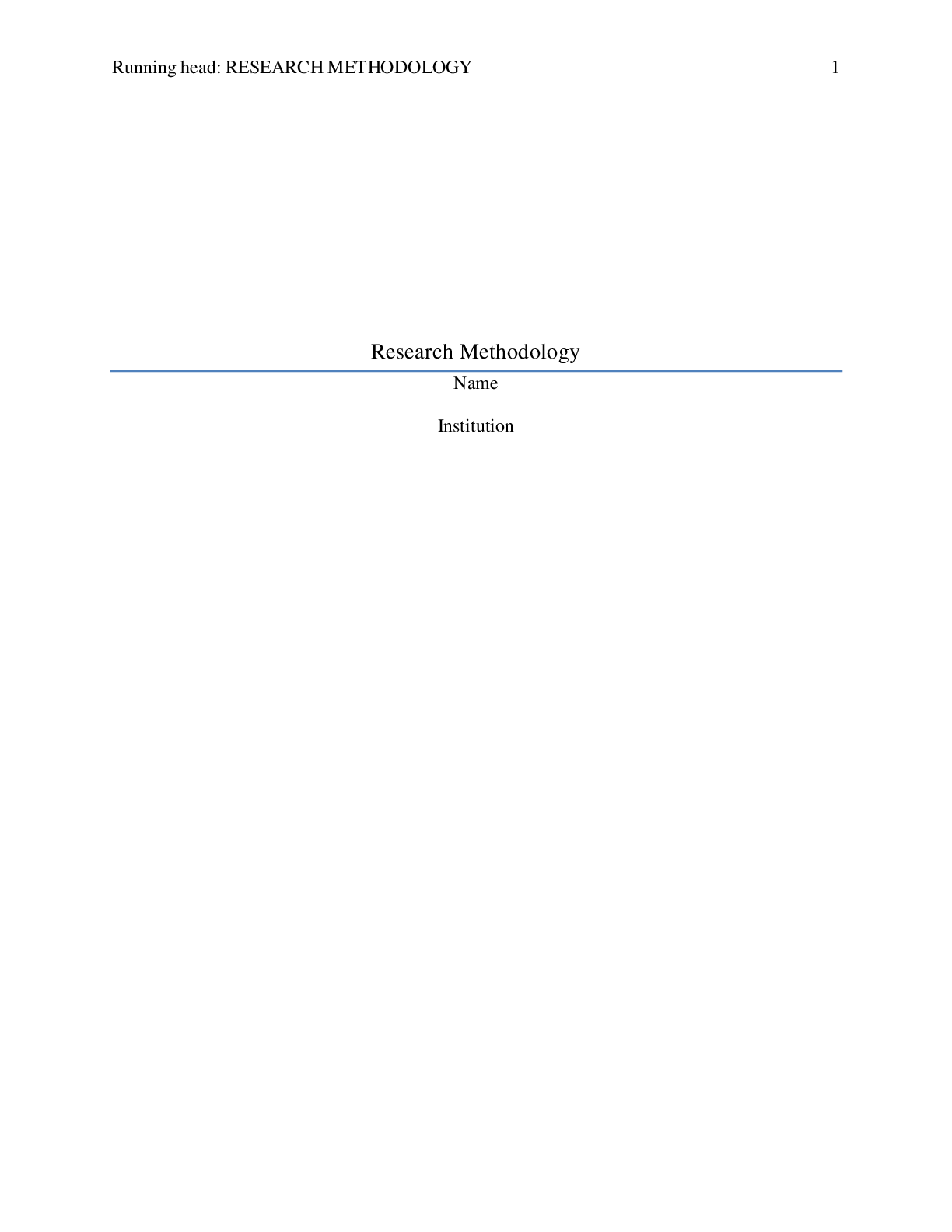


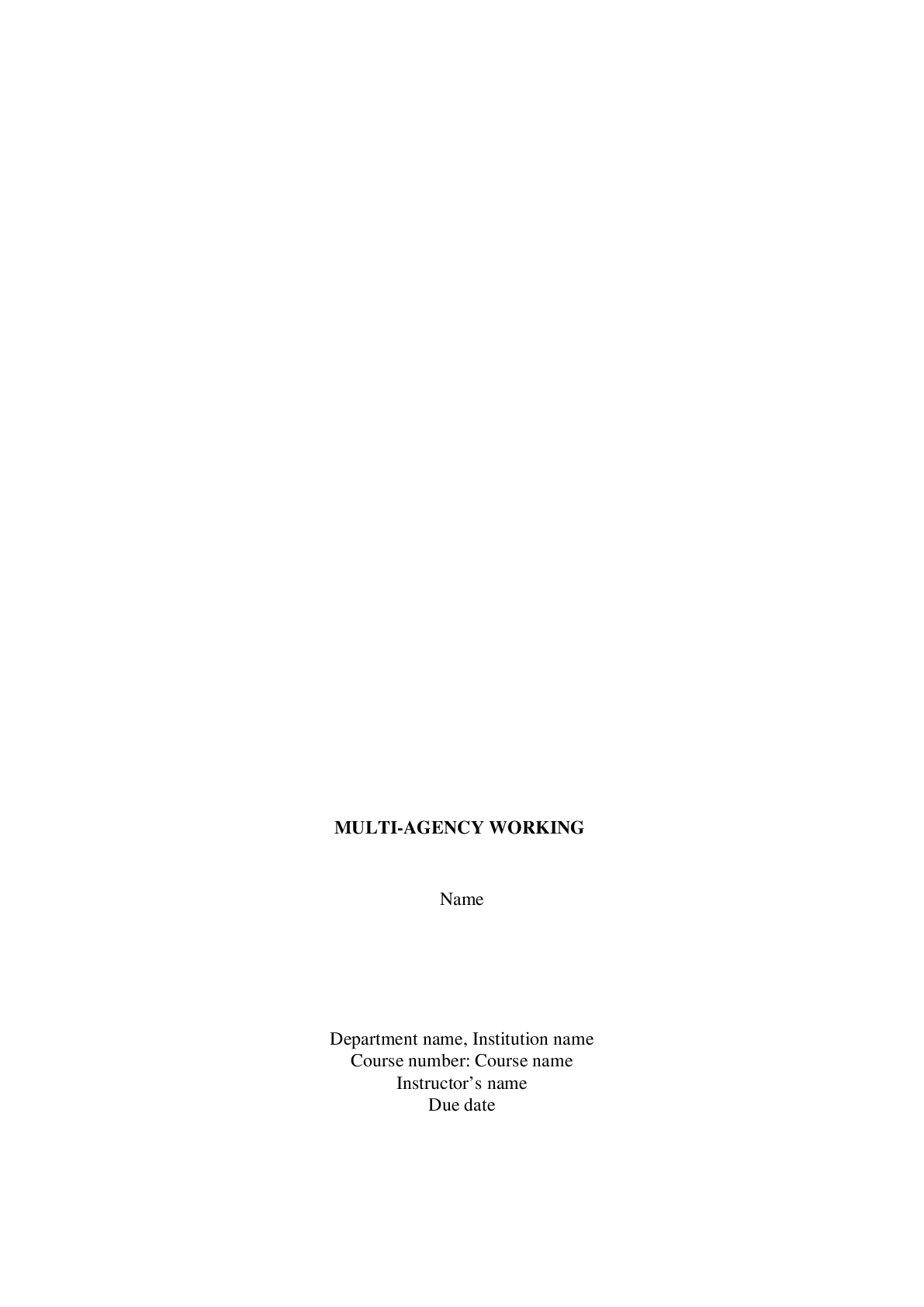
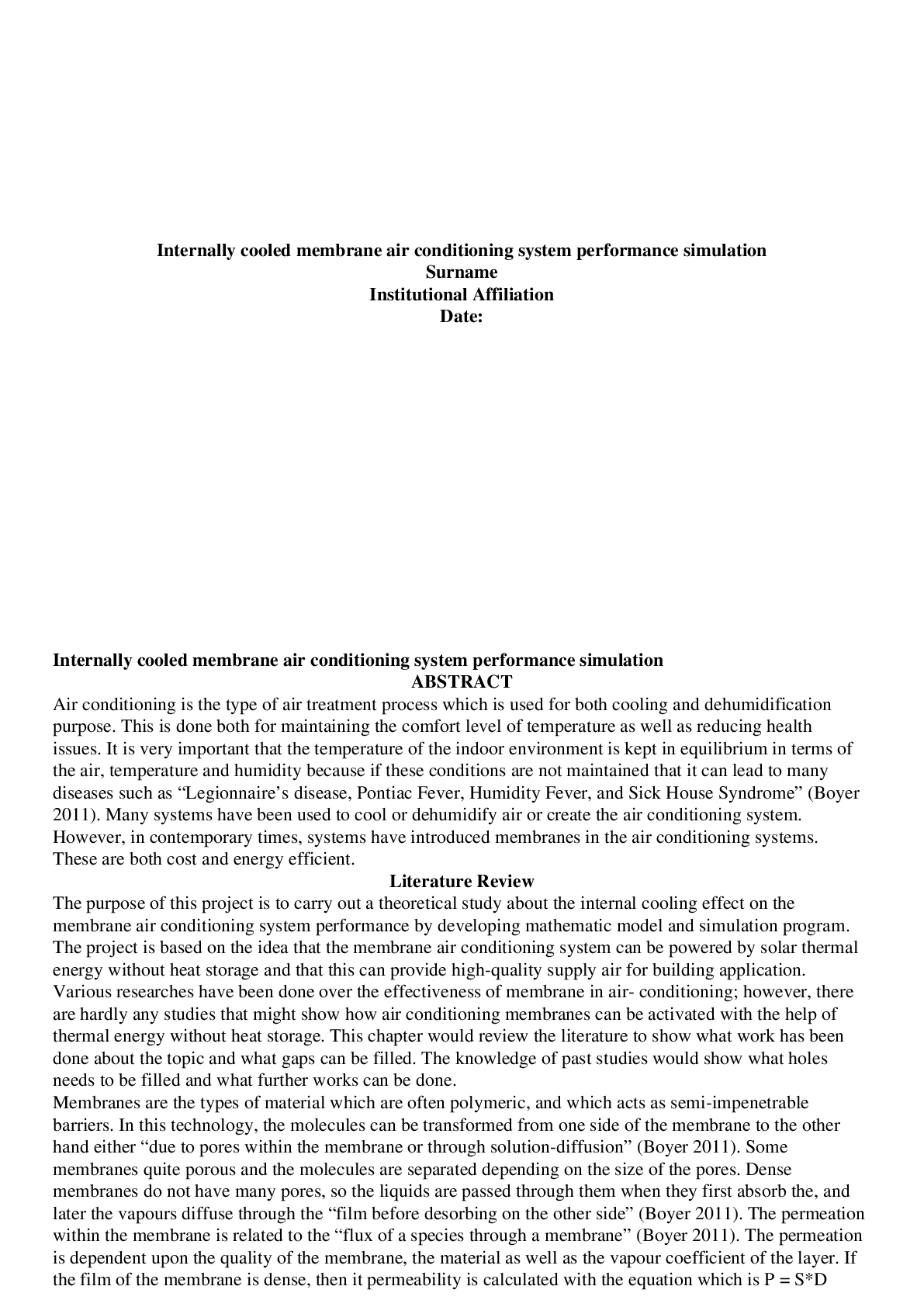
.png)

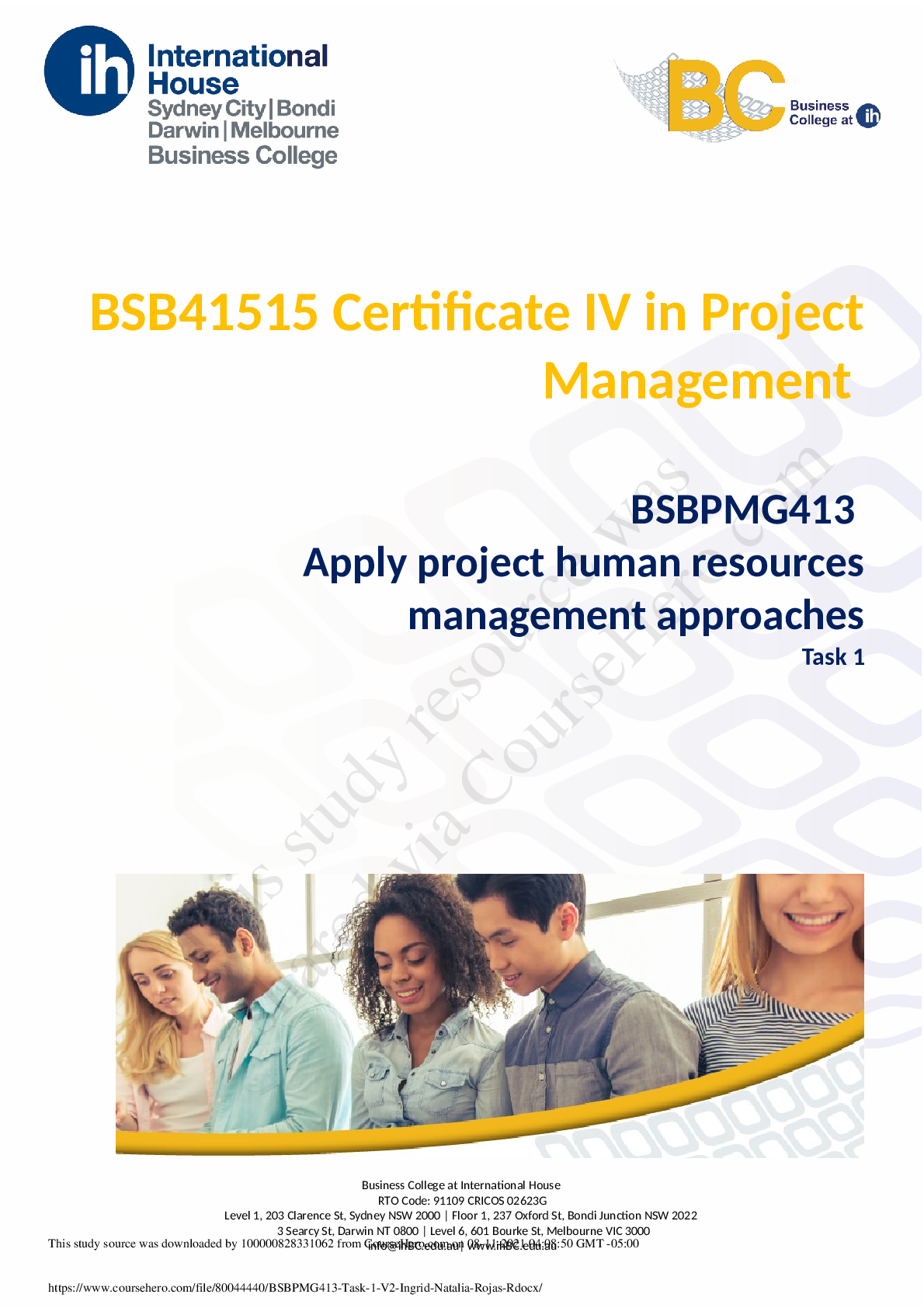
.png)

